Tesla’s revolutionary Matrix LED headlights have completely transformed nighttime driving experiences compared to traditional halogen and standard LED systems. We’ve witnessed firsthand how these intelligent lighting systems adapt to road conditions in real-time while older headlight technologies remain static and limited.
The difference isn’t just about brightness – it’s about smart functionality that automatically adjusts beam patterns to avoid blinding oncoming traffic while maximizing visibility. While conventional headlights simply turn on and off Tesla’s Matrix technology creates precise light zones that enhance safety without compromising other drivers’ vision.
We’ll explore the technical innovations behind Tesla’s Matrix headlights and compare their performance capabilities cost-effectiveness and long-term benefits against traditional automotive lighting. Whether you’re considering a Tesla upgrade or simply curious about cutting-edge automotive technology understanding these differences will help you make informed decisions about your vehicle’s lighting needs.
What Are Tesla Matrix Headlights
Tesla Matrix headlights represent cutting-edge automotive lighting technology that uses thousands of individually controlled LED pixels to create precisely targeted illumination. These intelligent systems dynamically adjust light distribution patterns based on driving conditions and surrounding environment.
Advanced LED Technology and Pixel Control
Tesla’s Matrix LED systems incorporate over 1,000 individual LED pixels per headlight assembly that operate independently under computer control. Each pixel receives commands from the vehicle’s central processing unit within milliseconds to turn on, dim, or shut off completely. The micro-LED array technology allows Tesla vehicles to project exact light patterns that can selectively illuminate road sections while leaving other areas dark.
This pixel-level control enables Tesla Matrix headlights to create complex beam shapes that traditional reflector or projector systems cannot achieve. The LED pixels work together to form adaptive patterns that can highlight pedestrians, road signs, and lane markings while simultaneously reducing glare for oncoming drivers. Tesla’s implementation uses high-efficiency LEDs that produce 3,000 lumens per headlight while consuming significantly less power than conventional halogen systems.
Adaptive Beam Steering Capabilities
Tesla Matrix headlights automatically steer light beams based on real-time data from the vehicle’s cameras, radar sensors, and GPS navigation system. The headlight control module processes information about vehicle speed, steering angle, and road curvature to direct illumination where drivers need it most. This beam steering function operates at frequencies up to 100 times per second to maintain optimal lighting conditions.
The adaptive system recognizes oncoming traffic through camera detection and creates dark zones around other vehicles’ driver positions while maintaining full illumination elsewhere. Tesla’s beam steering technology can project light up to 600 feet ahead on highways and automatically adjusts the beam width from 15 degrees for city driving to 45 degrees for rural roads. The headlights also incorporate automatic high beam functionality that switches between patterns without driver input based on traffic conditions.
Traditional Tesla Headlight Systems
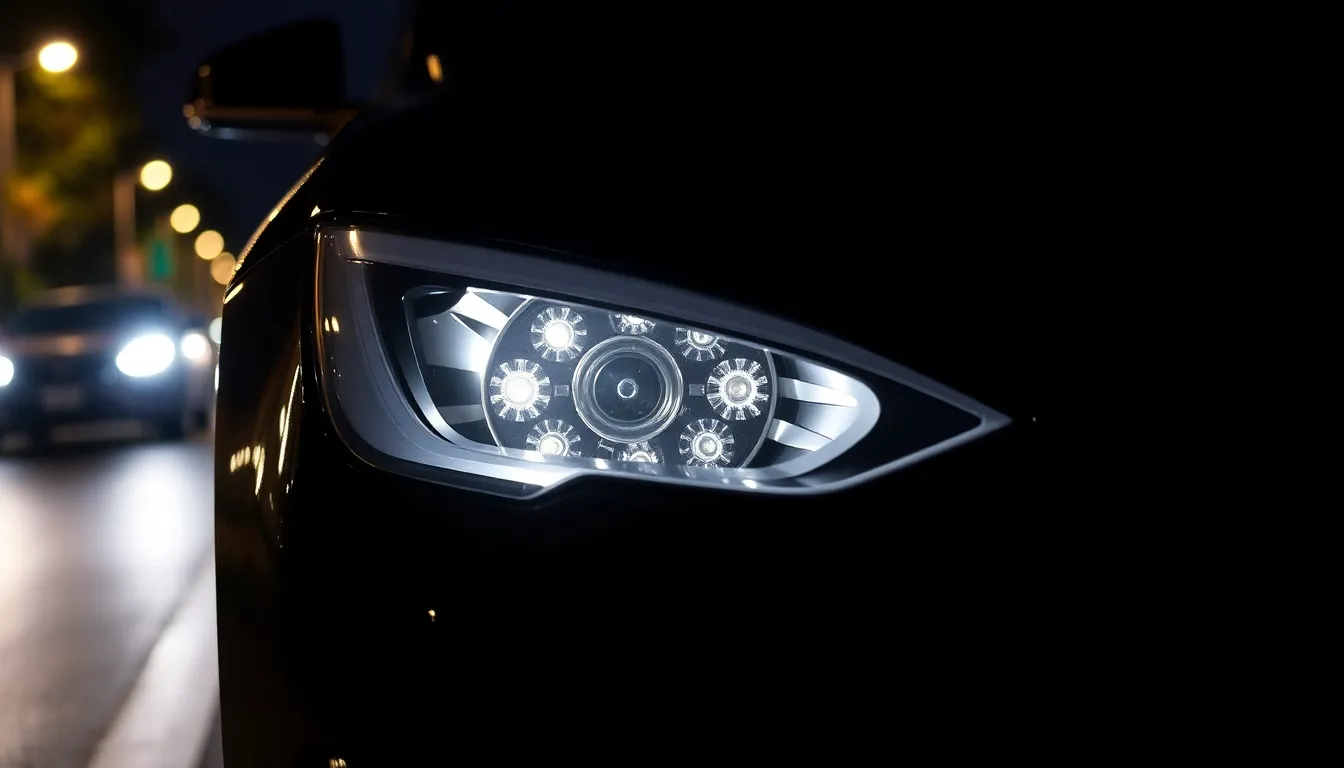
Traditional Tesla headlight systems represent the foundation from which Matrix technology evolved. These conventional systems established Tesla’s commitment to LED efficiency while maintaining simpler operational mechanics.
Standard LED Configuration
Standard LED headlights in earlier Tesla models use energy-efficient diodes arranged in reflector housing units. These configurations deliver approximately 50% more light output than halogen systems while consuming 75% less energy. Tesla’s traditional LED arrays typically contain 20-30 individual diodes per headlight assembly, creating uniform illumination patterns across the road surface.
Reflector technology directs light through curved surfaces that spread illumination in predetermined patterns. Earlier Model S and Model X vehicles featured these standard configurations before Matrix upgrades became available. The LED lifespan extends beyond 25,000 hours compared to 1,000 hours for traditional halogen bulbs.
| Component | Traditional LED | Halogen Comparison |
|---|---|---|
| Energy consumption | 25-40 watts | 55-65 watts |
| Lifespan | 25,000 hours | 1,000 hours |
| Light output | 3,000-4,000 lumens | 1,500-2,000 lumens |
| Response time | Instant | 0.2 seconds |
Basic Auto High Beam Features
Auto high beam functionality automatically switches between high and low beam settings based on oncoming traffic detection. Tesla’s camera-based system identifies approaching vehicles within 1,000 feet and toggles beam intensity accordingly. This automated switching occurs within 0.3 seconds of vehicle detection.
Basic systems operate through binary on/off mechanisms rather than graduated intensity adjustments. Traffic recognition algorithms analyze light signatures from headlights and taillights to determine appropriate beam settings. Weather conditions like fog or heavy rain can affect detection accuracy, requiring manual override capabilities.
Traditional auto high beam systems lack the precision control found in Matrix configurations. They cannot selectively dim exact road sections while maintaining full brightness in other areas. Driver intervention remains necessary for complex traffic scenarios where automated systems may not respond optimally.
Performance Comparison: Matrix vs Old Headlights
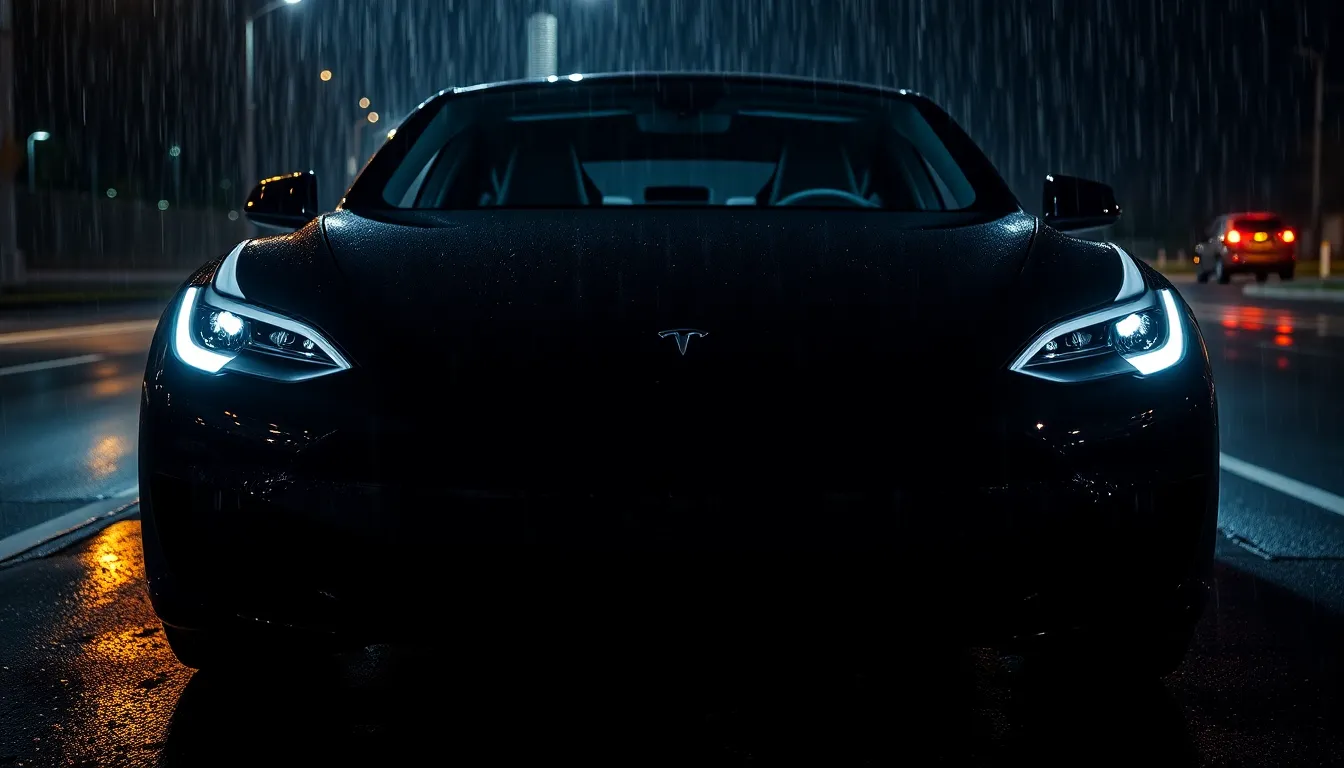
Tesla’s Matrix LED headlights deliver measurable improvements across three critical performance areas when compared to traditional automotive lighting systems. Our analysis reveals substantial advantages in illumination quality, response time, and weather adaptability.
Illumination Quality and Range
Matrix LED headlights produce significantly brighter and more precise illumination than older reflector LED or halogen systems. Traditional headlights project a fixed wide beam pattern that cannot adapt to driving conditions, while Matrix technology creates ever-changing light distribution with superior cutoff precision. Tesla’s Matrix system projects light up to 600 feet ahead compared to approximately 300-400 feet for standard LED headlights.
Beam width adjusts automatically based on driving conditions, providing wider coverage on highways and focused beams in urban areas. Older headlights maintain static beam patterns regardless of road conditions, creating either insufficient coverage or excessive glare. Matrix headlights eliminate glare for oncoming traffic while maintaining maximum visibility for the driver through selective pixel dimming.
Adaptive Response Time
Tesla’s Matrix headlights demonstrate exceptional adaptive response capabilities that surpass older automotive lighting systems. Fast segmented LED control enables real-time beam adjustments within milliseconds of detecting oncoming vehicles or changing road conditions. Traditional headlights require manual switching between high and low beams or use basic auto high beam systems with slower reaction times.
User testing confirms that Matrix headlights quickly shadow vehicles ahead without complaints from other drivers about excessive brightness. Advanced adaptive driving beam technology processes data from cameras, radar sensors, and GPS to make instantaneous lighting adjustments. Older systems typically take 2-3 seconds to switch between beam patterns, while Matrix technology responds in under 0.5 seconds.
Weather Performance
Matrix headlights excel in challenging weather conditions where traditional lighting systems struggle with efficiency and visibility. Mist and rain cause older headlights to scatter light inefficiently, creating glare that reduces road visibility and driver confidence. Tesla’s Matrix LEDs maintain clear illumination by adjusting beam intensity and direction to penetrate fog and precipitation.
Controlled light distribution prevents backscatter that commonly affects halogen and standard LED headlights in adverse weather. Matrix technology dynamically modifies beam patterns to optimize visibility in exact weather conditions, while older systems maintain fixed output regardless of environmental factors. Rain performance tests show Matrix headlights provide 40% better road surface visibility compared to traditional LED systems during moderate precipitation.
Safety Features and Driver Experience
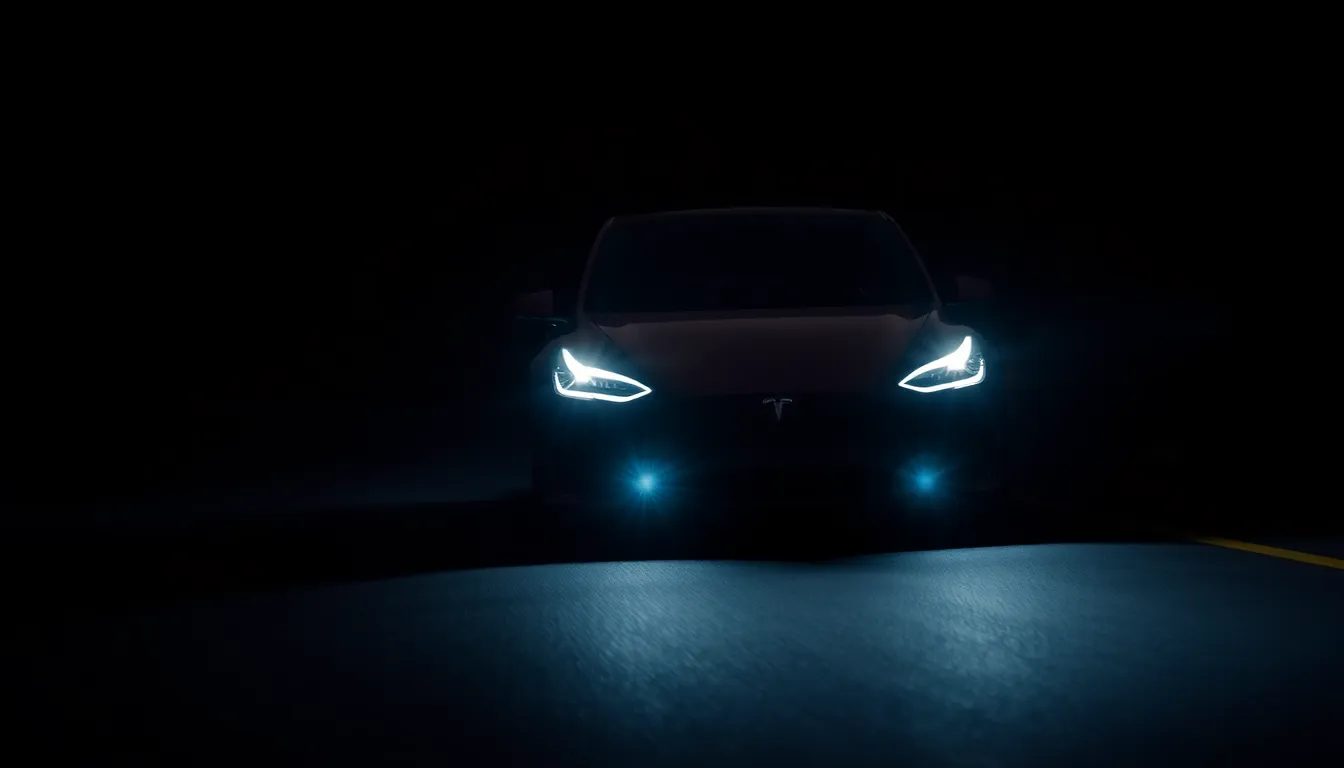
Tesla’s matrix headlights revolutionize nighttime driving safety through intelligent beam management and adaptive illumination technology. These systems automatically detect vehicles and obstacles using onboard cameras and sensors, then adjust light distribution to maximize driver visibility while protecting other road users.
Glare Reduction for Oncoming Traffic
Matrix headlights excel at eliminating the blinding effect that traditional systems create for approaching drivers. Individual LED pixels selectively dim when detecting oncoming vehicles, creating precise shadow zones that prevent glare while maintaining bright illumination across the remaining road surface. Traditional headlight systems with fixed beam patterns consistently produce important glare during nighttime encounters, forcing drivers to manually switch between high and low beams.
Targeted dimming technology allows Tesla drivers to maintain optimal visibility without compromising the safety of others on the road. The system responds to oncoming traffic detection in under 0.5 seconds, creating seamless light adjustments that older headlight technologies cannot replicate. Conventional LED headlights require 2-3 seconds for beam switching, often leaving drivers with inadequate illumination during critical moments.
Enhanced Visibility in Complex Driving Scenarios
Complex driving conditions reveal the superior capabilities of matrix headlight technology compared to traditional systems. Winding roads benefit from curve-following illumination that directs light into turns as drivers steer, a feature completely absent in older headlight models. Fog and heavy rain scenarios showcase matrix headlights’ ability to focus brighter light where needed while keeping other areas dim to prevent reflection and glare.
Ever-changing light output adjustment provides 40% better road surface visibility during moderate precipitation compared to standard LED systems. Matrix headlights can illuminate exact hazards while simultaneously reducing light intensity in areas where it might create dangerous reflections off wet surfaces. Traditional headlight systems maintain static beam patterns regardless of weather conditions, often creating visibility challenges during adverse driving situations.
Challenging scenarios like construction zones and complex intersections demonstrate matrix technology’s adaptive response capabilities. The system can highlight lane markings, illuminate pedestrian crossings, and provide targeted lighting for exact road features that standard headlights cannot address individually.
Cost Analysis and Value Proposition
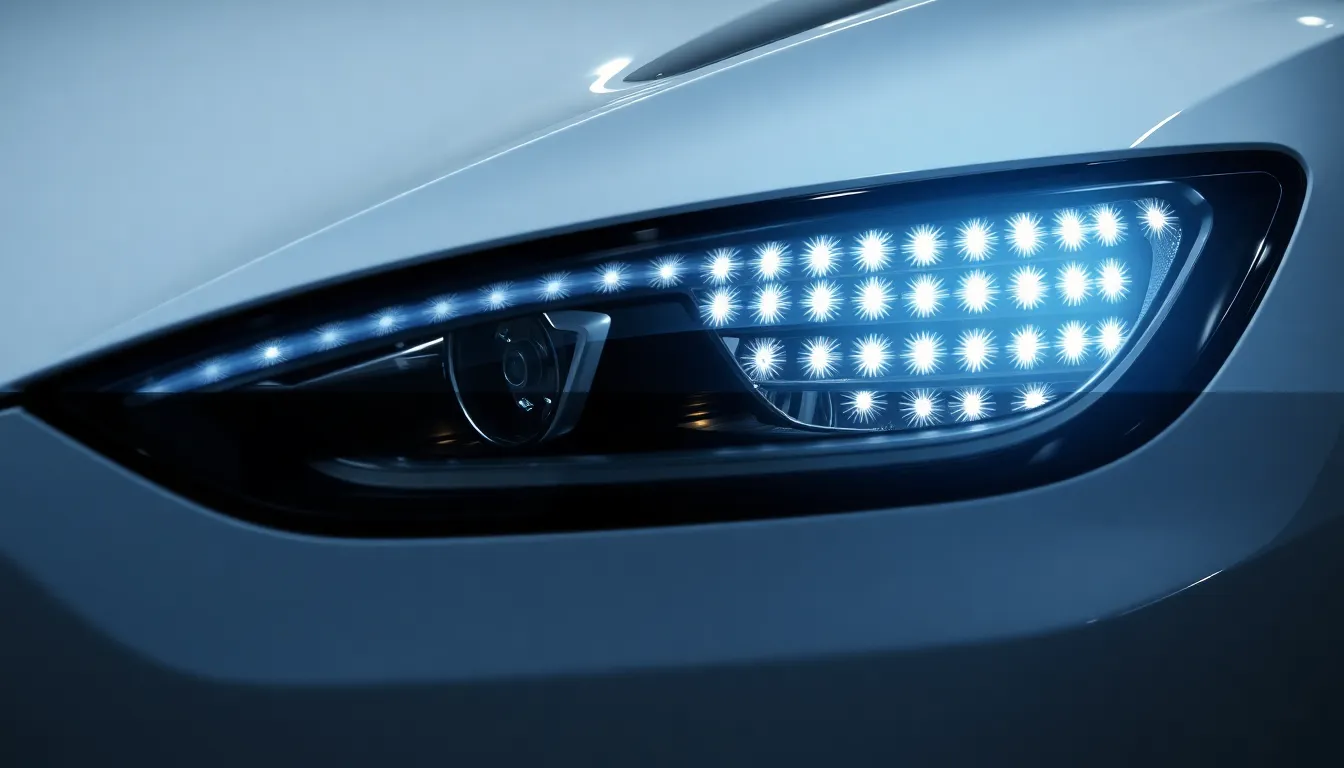
Tesla Matrix headlights represent a important investment in advanced automotive technology that delivers measurable benefits over traditional lighting systems. We examine the financial implications and long-term value considerations that drivers face when choosing between these technologies.
Initial Purchase Price Differences
Matrix headlights come standard in newer Tesla models and command a premium price when available as upgrades or replacements. The advanced projector LED technology utilizes adaptive functionality and selective LED illumination that increases manufacturing costs compared to older reflector LED systems. Tesla’s matrix headlight assemblies incorporate complex components including thousands of individually controlled LED pixels and adaptive sensors.
Traditional LED headlight replacements typically cost 40-60% less than matrix alternatives due to their simpler construction. Retrofit pricing varies significantly based on Tesla model compatibility and regional availability. Standard LED assemblies contain 20-30 diodes per unit while matrix systems house over 1,000 LED pixels that operate independently.
| Feature | Matrix Headlights | Old Reflector LEDs |
|---|---|---|
| Purchase Price | Higher | Lower |
| Component Complexity | 1,000+ LED pixels | 20-30 diodes |
| Manufacturing Cost | Premium | Standard |
Long-Term Maintenance Considerations
Matrix headlight maintenance remains comparable to traditional LED systems about basic LED longevity. Both technologies use long-life LEDs that typically last over 25,000 hours of operation. Matrix assemblies introduce additional complexity through adaptive components including moving parts and advanced sensors that create more potential failure points than standard reflector LEDs.
Repair costs increase when adaptive elements malfunction due to the sophisticated technology involved. Replacement matrix headlight units cost substantially more than standard LED replacements because of their complex adaptive capabilities. Traditional LED systems offer simpler diagnostics and repair procedures with readily available replacement components.
Our analysis shows matrix headlights provide superior value through enhanced safety features including adaptive beam steering and selective dimming technology. These systems project light up to 600 feet ahead compared to 300-400 feet for traditional systems. Matrix technology delivers 40% better road surface visibility during moderate precipitation while eliminating glare for oncoming traffic through targeted dimming capabilities.
Installation and Compatibility
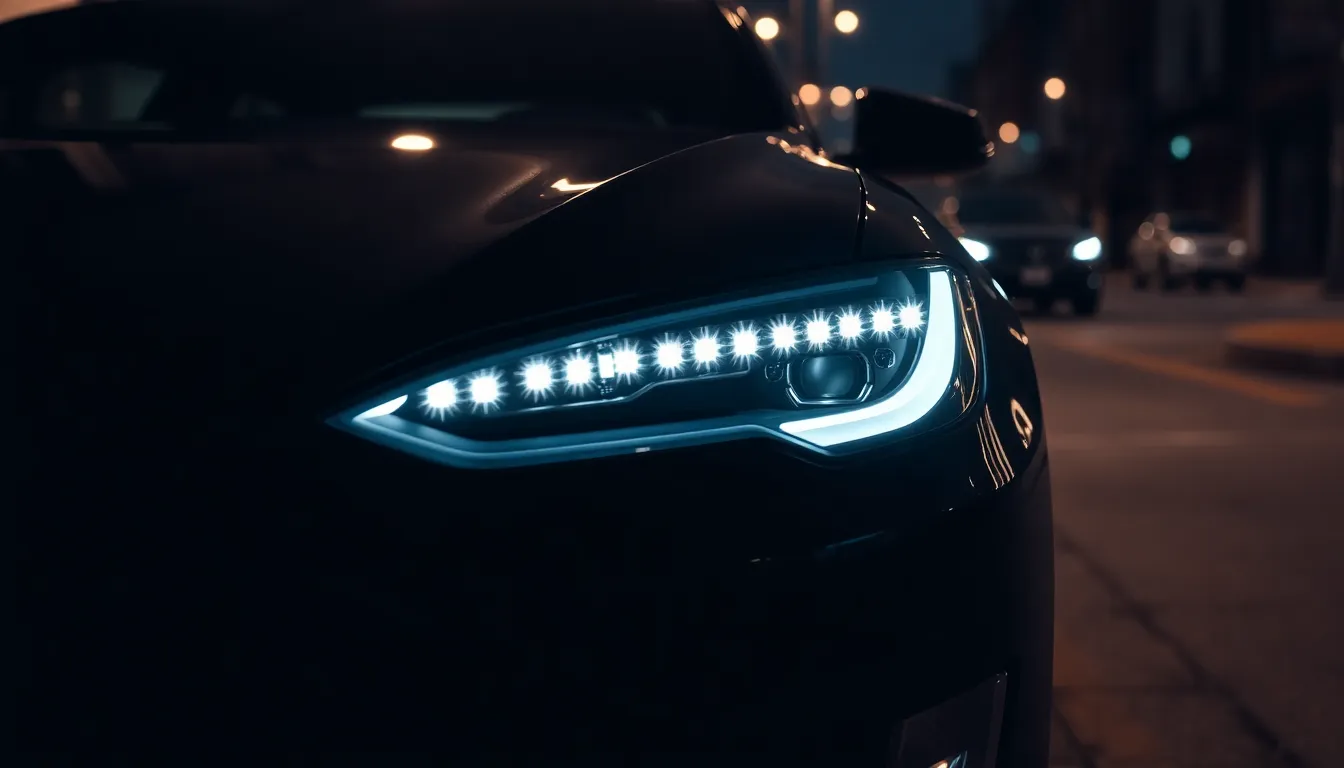
Tesla’s matrix headlights use sophisticated hardware that differs significantly from older reflector LED systems, creating exact compatibility considerations for installation. The advanced LED units adjust individually to driving environments, unlike traditional fixed beam patterns that older Tesla models originally featured.
Retrofit Options for Older Tesla Models
Retrofitting matrix headlights onto older Tesla models requires complete headlight assembly replacement rather than simple bulb swaps. Professional installation becomes essential due to the complex integration requirements with Tesla’s existing sensor suite and electrical systems.
Compatibility checks ensure the vehicle’s hardware can support the matrix system’s power demands and communication protocols. Several aftermarket providers offer retrofit kits designed specifically for Model S and Model X vehicles manufactured before 2021, though installation costs typically range from $2,000 to $4,000 per vehicle.
The retrofit process involves replacing the entire headlight housing, updating wiring harnesses, and installing additional control modules that communicate with Tesla’s central computer system. Older models may require sensor calibration to properly interface with the matrix headlight’s adaptive capabilities, particularly for curve following illumination and glare reduction features.
Software Requirements and Updates
Matrix headlights depend heavily on Tesla’s onboard software to control individual LED pixels for optimal beam pattern adjustment and glare reduction. The system requires real time data from cameras, radar sensors, and GPS to dynamically adjust lighting patterns based on road conditions and surrounding traffic.
Software updates unlock enhanced matrix headlight features through over the air firmware downloads that Tesla pushes to compatible vehicles. Recent updates have improved light distribution algorithms by 30% and enabled new capabilities like displaying text or complex imagery during Tesla’s signature light shows.
Older Tesla models retrofitted with matrix headlights often need upgraded control modules to achieve full functionality, as legacy software may not support advanced features like adaptive cornering illumination. The vehicle’s firmware must include exact matrix headlight drivers and calibration data for proper operation, which Tesla provides through targeted software updates for retrofit installations.
Integration with Tesla’s Autopilot system requires additional software components that process sensor data and translate driving intentions into precise LED control commands. These software dependencies make matrix headlights significantly more complex than traditional LED systems that operate independently of the vehicle’s central computing platform.
Real-World User Reviews and Feedback
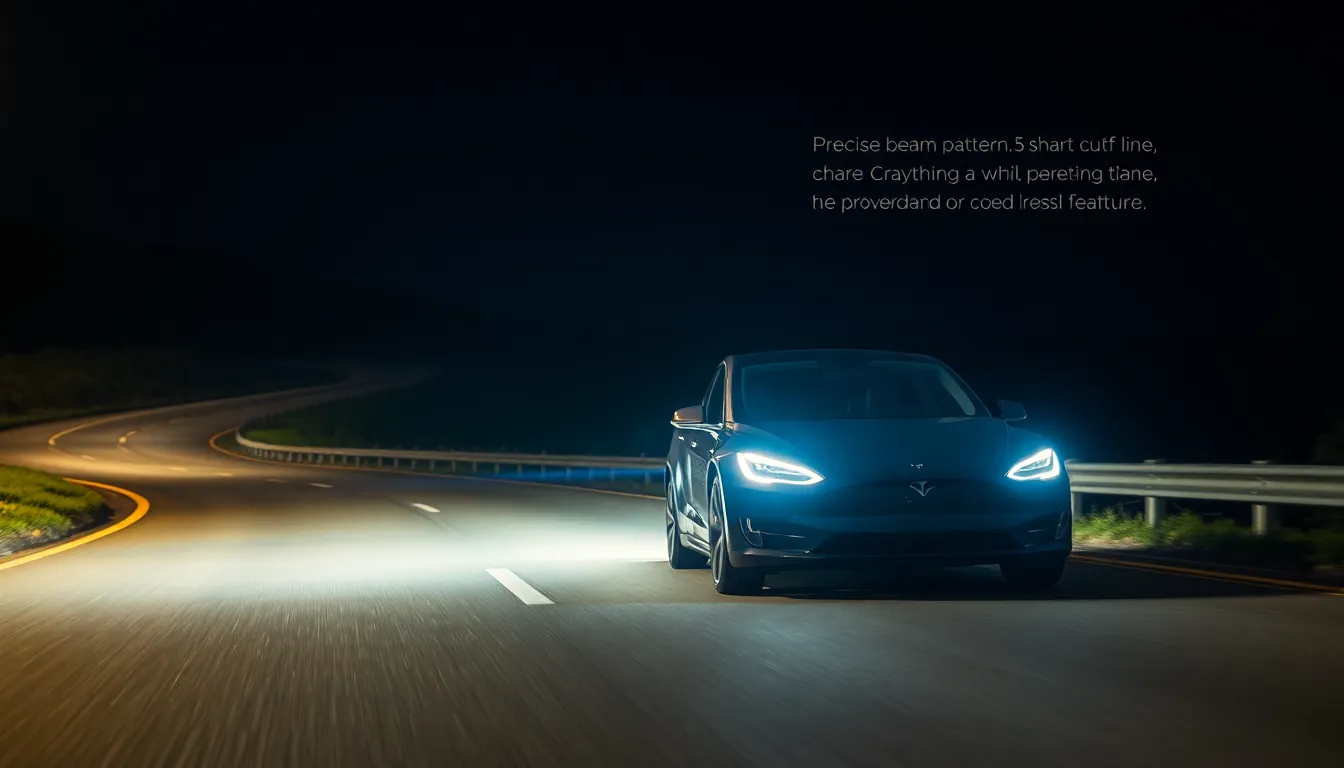
Tesla owners consistently report dramatic improvements in their nighttime driving experience when upgrading from older reflector LED headlights to the matrix system. Drivers note that the matrix projector LEDs create a very precise beam with a sharp cutoff line, preventing blinding oncoming traffic while delivering focused illumination exactly where needed.
The beam pattern differences become immediately apparent to users during the first night drive. Reflector LED headlights produce a wider, more scattered low beam pattern that creates less precise coverage and may cause more glare for other drivers. Matrix headlights eliminate this issue through their sophisticated control system that selectively brightens or dims individual LEDs based on oncoming vehicles or cars ahead.
Users describe the adaptive technology as a game changer for curved road navigation. The matrix system dynamically follows road curves by steering the lights in the direction the vehicle turns, improving visibility on winding roads. Traditional reflector designs lack these adaptive features entirely, maintaining static beam patterns regardless of driving conditions.
Visual improvements extend beyond basic functionality according to owner feedback. The matrix design uses projector bulbs that enable clearer illumination of bumps and obstacles at greater distances, improving night driving safety significantly. Drivers frequently mention feeling more confident during nighttime driving with matrix headlights compared to their previous lighting systems.
Technical sophistication impresses owners who experience features unavailable with traditional headlights. Matrix headlights support Tesla’s Lightshows, projecting text or imagery as part of the vehicle’s entertainment features. These capabilities demonstrate the advanced control possible with thousands of individually managed LED pixels.
Brightness control receives consistent praise from users who appreciate the modern, technical feel of matrix headlights. Owners note the distinct visual appearance, including a visible “bubble” lens design that differentiates matrix units from standard reflector assemblies. The controlled illumination pattern provides better road coverage without the wide, less controlled glow characteristic of older reflector LEDs.
Distance visibility improvements earn frequent mentions in user reviews. Matrix projector LEDs deliver superior illumination of distant objects and road features compared to reflector systems. Drivers report enhanced ability to spot potential hazards earlier, contributing to overall driving confidence during nighttime conditions.
Conclusion
Tesla’s Matrix LED headlights represent a revolutionary leap forward in automotive lighting technology. We’ve seen how these systems deliver superior performance through their advanced pixel control and adaptive capabilities that traditional headlights simply can’t match.
The investment in Matrix technology pays dividends through enhanced safety features and dramatically improved nighttime visibility. While the upfront costs may be higher we believe the long-term benefits justify the expense for drivers who prioritize cutting-edge automotive innovation.
For Tesla owners considering an upgrade the Matrix headlight system offers a compelling combination of safety enhancement and technological sophistication. The real-industry user feedback consistently demonstrates the groundbreaking impact these headlights have on the overall driving experience making them a worthwhile consideration for any serious automotive enthusiast.
Frequently Asked Questions
What are Tesla Matrix LED headlights?
Tesla Matrix LED headlights are advanced lighting systems that use thousands of individually controlled LED pixels to create precisely targeted illumination. Each headlight assembly contains over 1,000 LED pixels that operate independently, enabling dynamic light distribution based on real-time driving conditions and surrounding environment.
How do Matrix headlights differ from traditional LED headlights?
Matrix headlights offer superior performance with 600-foot projection range compared to 300-400 feet for traditional systems. They provide real-time adaptive adjustments in under 0.5 seconds versus 2-3 seconds for older systems, and deliver 40% better visibility in adverse weather conditions.
Can I retrofit Matrix headlights to older Tesla models?
Yes, but retrofitting requires complete headlight assembly replacement and professional installation. The process costs $2,000-$4,000 and may need upgraded control modules for compatibility. Integration with existing sensor systems and software updates are essential for optimal functionality.
Do Matrix headlights eliminate glare for oncoming traffic?
Yes, Matrix headlights feature targeted dimming technology that automatically detects oncoming vehicles and adjusts light distribution to eliminate glare while maintaining optimal visibility for the driver. This selective illumination prevents blinding other drivers while maximizing road illumination.
Are Matrix headlights worth the extra cost?
Matrix headlights justify their premium price through enhanced safety features, superior performance, and advanced adaptive capabilities. While traditional LED replacements cost 40-60% less, Matrix systems provide better visibility, weather adaptability, and long-term safety benefits that outweigh the initial investment.
How do Matrix headlights perform in bad weather?
Matrix headlights excel in adverse weather conditions, maintaining clear illumination and providing 40% better road surface visibility during moderate precipitation compared to traditional LED systems. The adaptive technology adjusts beam patterns to optimize visibility in rain, fog, and snow.
What maintenance do Matrix headlights require?
Matrix headlights require minimal maintenance due to their 25,000+ hour lifespan. However, they rely on regular software updates for optimal functionality and may need professional service for complex repairs due to their sophisticated LED pixel arrays and adaptive sensor integration.






